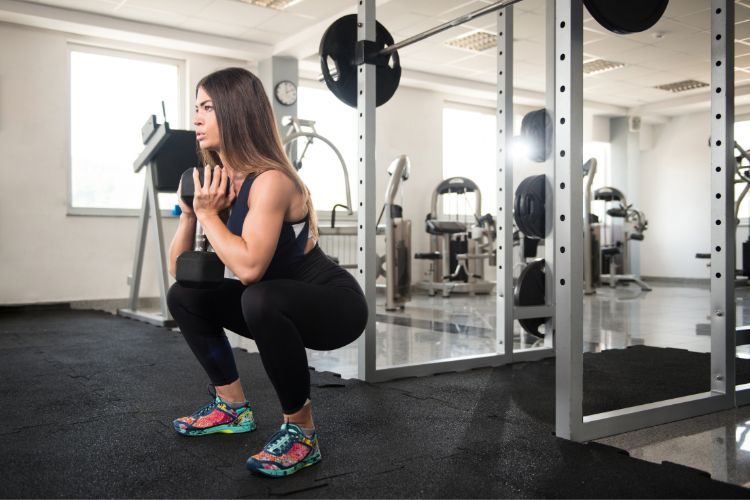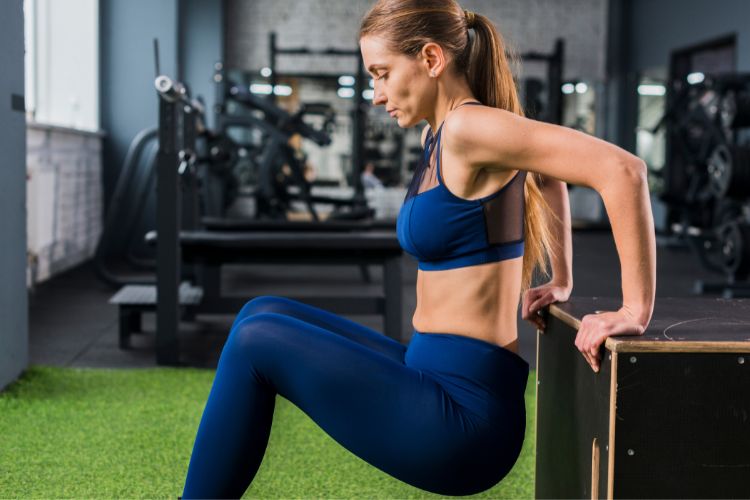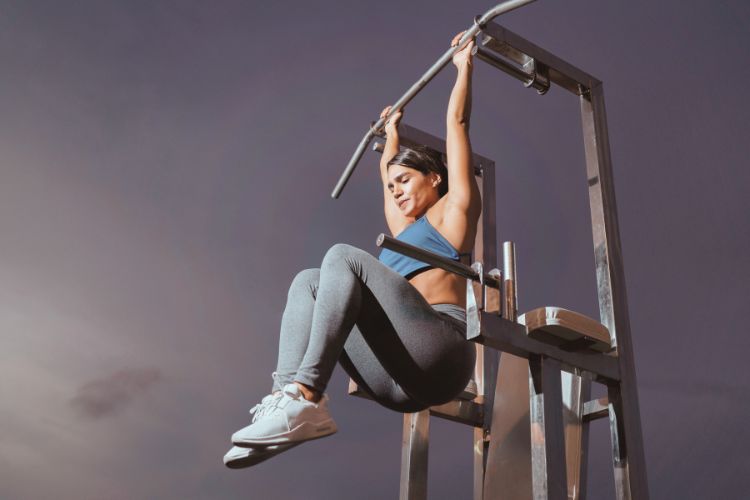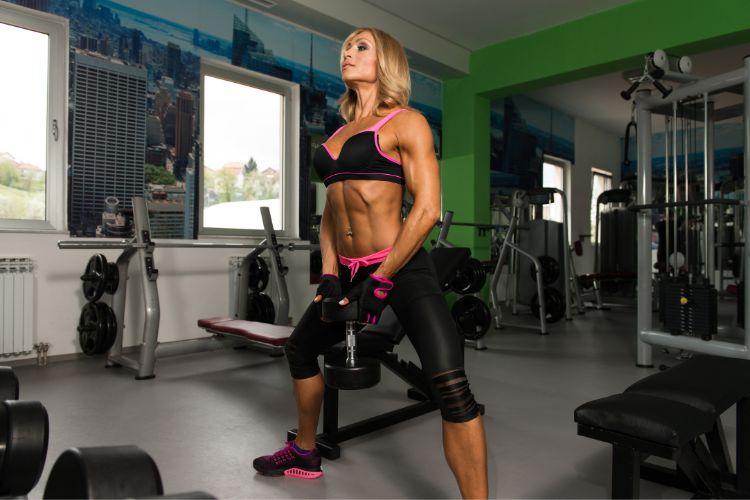Sign up for workout ideas, training advice, reviews of the latest gear and more.






In today’s world, where health and fitness are of paramount importance, finding the right training regimen is crucial. For women, this involves considering unique physiological and lifestyle factors. Whether you’re a working professional, a mother, or just someone looking to stay fit, the right training program can pave the way for a life filled with energy, confidence, and strength.
First, let’s address the elephant in the room. Men and women are different, especially when it comes to physiological aspects. Women generally have a higher percentage of body fat and less muscle mass compared to men. Hormonal fluctuations can also play a significant role in a woman’s strength, endurance, and recovery.
While this doesn’t mean that women can’t be strong or fit, it does suggest that training programs need to be tailored to their specific needs to achieve optimal results.
Myth: “Lifting weights will make women bulky.”
Truth: Due to hormonal differences, especially the reduced presence of testosterone, women don’t gain muscle mass as quickly or to the same extent as men. Instead, strength training helps women develop toned muscles, increase metabolism, and enhance bone density.
Frequency: Aim for 3-4 times a week.
Exercises: Incorporate compound movements like squats, deadlifts, and push-ups. They work multiple muscle groups and maximize calorie burn.
Repetitions and Sets: 3-4 sets of 8-12 reps work best for muscle toning and strength.
Cardio doesn’t just mean endless hours on the treadmill. It can be anything that raises your heart rate:
HIIT (High-Intensity Interval Training): Alternating between high-intensity bursts and rest or lower-intensity periods. It’s efficient, burns more calories in less time, and can be done without any equipment.
Dance: A fun way to get your heart rate up. Join a Zumba or aerobics class.
Swimming: Offers a full-body workout and is gentle on the joints.
Flexibility and Balance: The Often Overlooked Elements
Yoga and Pilates are excellent for enhancing flexibility, core strength, and mental well-being. They help in correcting posture, reducing the risk of injuries, and promoting holistic health.
Your workouts will only be as good as the fuel you provide your body. For women, it’s crucial to ensure adequate iron, calcium, protein, and other essential nutrients.
Protein: Helps in muscle repair and growth. Sources include lean meats, dairy, and plant-based proteins like lentils and chickpeas.
Calcium and Vitamin D: Essential for bone health.
Iron: To prevent fatigue and support energy levels, especially for menstruating women.
Every woman is unique. While period tracking apps are useful, learn to listen to your body’s cues. During certain phases of your menstrual cycle, you might feel more energetic and strong. Capitalize on those days for more intense workouts. On more fatigued days, focus on gentle exercises or rest.
Challenges Specific to Women
Menopause and Training: As estrogen levels drop, women might experience decreased muscle mass and bone density. Here, strength training is vital to combat these changes.
Post-pregnancy: Regaining core strength is crucial. Ensure you consult a physician before starting any postnatal exercises.
Bone Health: Women are at a higher risk of osteoporosis. Weight-bearing exercises can help in maintaining bone density.
Another dimension often overlooked in training regimens, especially for women, is the deep-seated mind-body connection. Women juggle multiple roles, often being caregivers, professionals, homemakers, and more. This multiplicity of roles can sometimes be mentally taxing. Exercise, when incorporated mindfully, can serve as a tool for mental rejuvenation and resilience.
Endorphin Release: Often referred to as the body’s natural painkillers, endorphins are chemicals produced by the body to relieve stress and pain. They can produce feelings of euphoria similar to that produced by opioids. Regular exercise helps in releasing these, elevating one’s mood.
Stress Reduction: Physical activity increases the production of norepinephrine, a chemical that can moderate the brain’s response to stress. This means a workout can literally help you stay calm under pressure.
Enhanced Self-Confidence: Completing a rigorous workout or achieving fitness milestones can provide an immediate confidence boost. Over time, as you notice positive changes in your physique, this confidence translates to other spheres of life.
Meditative Movement: Practices like Tai Chi or Qigong combine slow, deliberate movements with deep breathing and meditation. Such practices enhance flexibility, balance, and mental clarity.
Mindfulness and Exercise: Whatever your chosen form of exercise, do it with complete awareness. This not only maximizes the benefits but also helps in grounding oneself.
A significant aspect of training, particularly for women, revolves around the social connections they can form or strengthen.
Group Classes: Whether it’s spinning, dance, or a boot camp, working out in a group can be incredibly motivating. The camaraderie developed in these classes fosters a sense of community, helping women to stay committed to their fitness journey.
Joining Sports Clubs or Leagues: Engaging in team sports is not just for school kids or professional athletes. Many communities offer women’s leagues for soccer, basketball, or even sports like ultimate frisbee. These avenues provide both physical training regimen and an opportunity to socialize and network.
Women’s bodies go through several stages, from puberty to menopause and beyond. Each stage brings its set of challenges and strengths. Recognizing these can help in customizing workouts that are not only effective but also enjoyable.
Teenagers: Young girls benefit from a mix of cardiovascular exercises and strength training to build a foundation for a lifetime of fitness. Moreover, instilling the importance of exercise at this age can lay the groundwork for healthy habits.
Pregnancy: While it’s essential to consult with a healthcare provider, most pregnant women can benefit from moderate exercise. It can help manage weight gain, prepare for childbirth, and boost mood.
Seniors: As women age, maintaining bone density and muscle mass becomes crucial. Low-impact exercises, resistance training, and balance exercises can be particularly beneficial.
In today’s digital age, technology plays an indispensable role in fitness.
Fitness Apps: Track workouts, menstrual cycles, or even meals to ensure you’re fueling your body right.
Wearable Tech: Devices like smartwatches or fitness bands can monitor heart rates, track steps, and even remind you to move if you’ve been sedentary for too long.
Virtual Workouts: Especially relevant in a post-pandemic world, virtual workouts allow women to engage in guided exercises from the comfort of their homes. From yoga to HIIT, there’s a virtual class for everyone.
For women, a training regimen is more than just a pathway to physical fitness. It’s a journey of self-discovery, empowerment, and mental well-being. The symbiotic relationship between the mind and body ensures that as we strengthen one, we invigorate the other. By embracing a holistic approach to training, women can navigate the unique challenges they face, armed with strength, confidence, and grace.
Stay up to date on the latest women’s health, fitness and lifestyle trends and tips.